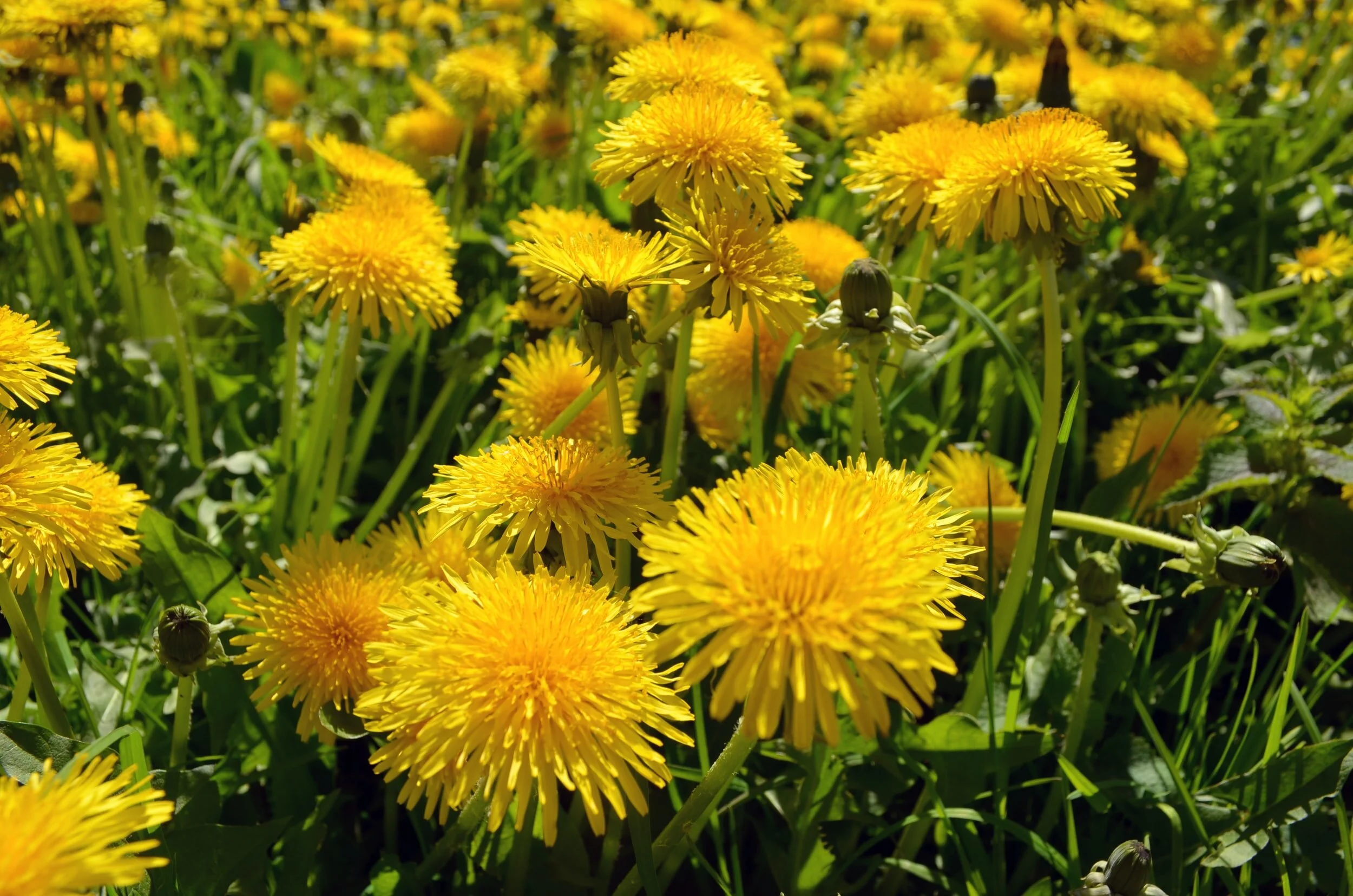Bumble Bees and Dandelions
by Peggy Schauffler
Recently I have been in my yard pruning my trees and working in the garden. I have been noticing all the wild edible plants that are thriving. I stopped to pick some dandelion greens and my mind went to last year when the dandelions began to bloom just as the Bumble bees began to emerge from their winter hibernation. In years past I remember the bouquets of dandelions my daughter would bring to me. She loved flowers. I was always on the lookout to keep her from picking my lily’s. To help satisfy her need to pick flowers I would always point her to the brightly colored dandelion flowers. The dandelion is my daughter's absolute favorite and because of these memories it has become my favorite.
Most of us think of dandelions as one of the biggest nuisances in our garden and yard. They come up everywhere. In the garden, the roots grow extra deep in the rich soft soil. I agreed they are not always wanted. However, let us consider the brighter side of the dandelion. They are hardy in winter, they never die, even when you dig them up and compost them. They are drought resistant, never have insects, mold, or fungus on them. They come in handy for children to pick for their mothers. They bloom over and over again. They are brilliant yellow and are some of the first cheery flowers to bloom in the spring. You don’t have to do a thing to encourage them to grow; they are ready and willing anytime anyplace in any condition.
Dandelions can be eaten raw, cooked, dried, or placed in a smoothie. They are rich in vitamin A, C, K, Folate, and other B vitamins. Like other deep-rooted plants, they are rich in minerals such as iron, calcium, magnesium, and potassium. They are a potent antioxidant and contain inulin, a soluble fiber that helps to reduce cholesterol.
The dandelion has another job as well. It feeds the bees. The dandelion blooms just about the same time the bumblebees come out from winter hybridization. The queen bumblebee lived underground all winter living on her stored body fat. When she emerges, it is critical for her to find nectar quickly. The queen is the only one that winters over. All the other bees from the summer hive die. The queen lays her eggs and raises the first batch of baby bees by herself. The hive continues to grow as each new adult bee begins to help mama with all the new baby bumblebees. Some baby bumblebees leave to make new hives and some live at home all their lives. As the honeybees dwindle, as a gardener, I watch to see what other forms of insects will pollinate my trees. Last year I saw quite a few bumblebees in my yard and garden. I was tickled because I knew they would do a good job pollinating my trees, but the trees were not blooming yet. As I watched to see what the bumblebees were feeding on, I noticed that the only flower blooming in quantity at the time were the dandelions. The same dandelions my daughter had picked. I gave the warning that no one was to mow my yard or destroy my dandelion crop until there were enough other flowers blooming to sustain my bumblebees.
So, the next time you pass a yard full of blooming dandelions considers that they may be feeding the bumblebees. Dandelions are a very necessary component of our ecosystems. They are beautiful to behold, are a wonderful food source, and sustain many needed insects and butterflies. Plus, they satisfy the cravings of all children to pick flowers.
RECIPE: Dandelion Greens
8 cups of washed dandelion greens. (Pick before they blossom to help reduce bitter flavor)
10 cups of boiling water
1 tsp Celtic salt
3 Tbsp pesto
1 onion, chopped
2 cloves of garlic, crushed
Bring the water to a boil. Drop whole dandelion leaves into boiling water. Let boil for 5 minutes. Remove from heat, discard water, and drop leaves in cool water for a few minutes. While boiling the dandelion greens sauté onion and garlic until tender. Chop cool dandelion leaves in ½” pieces and drop in a skillet with onions and garlic. Sauté until greens are tender. Remove from heat, then add salt. and pesto. Mix well. Serve while hot.




